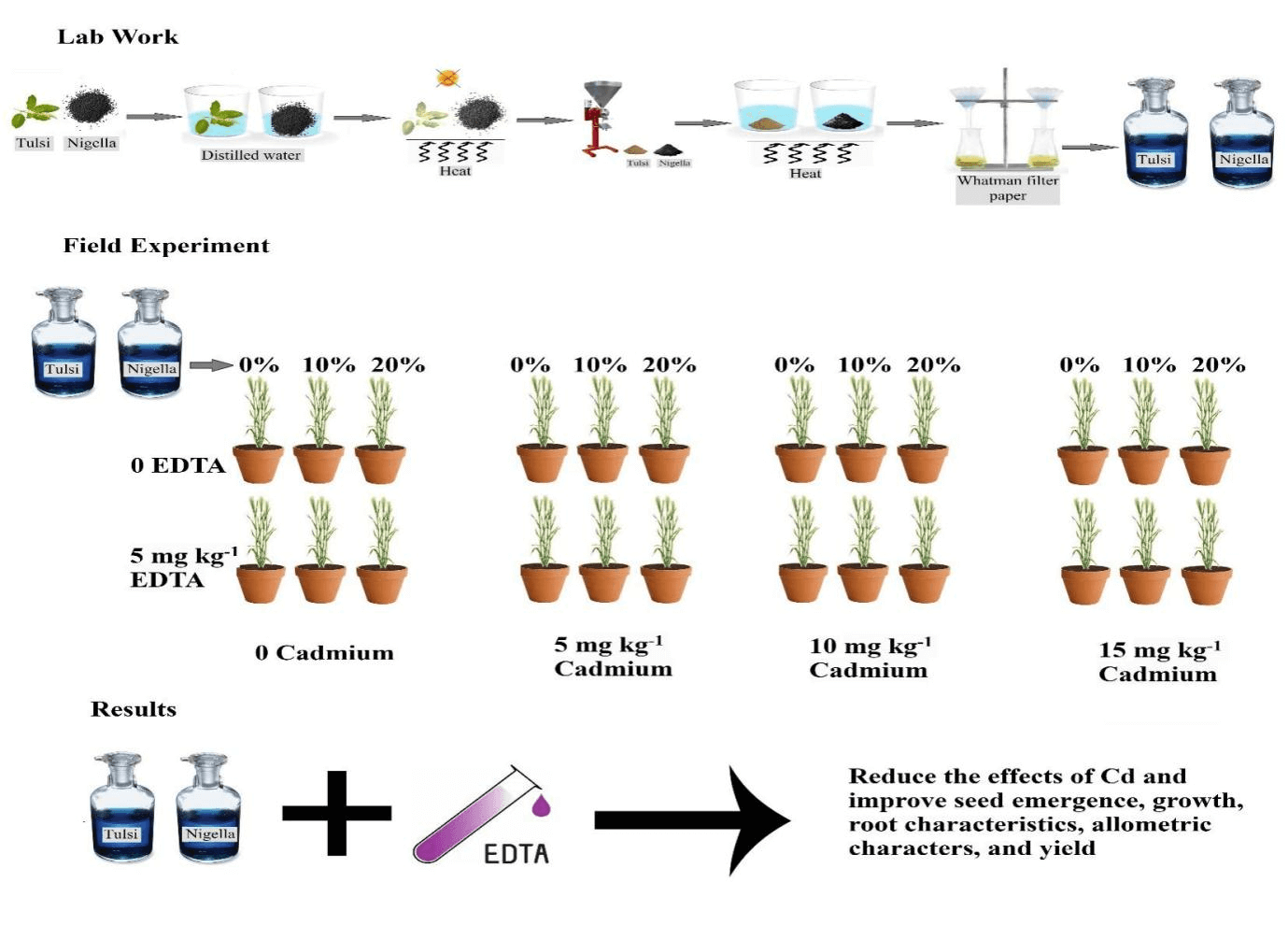 Open Access
Open Access
ARTICLE
Combined Application of Biostimulants and EDTA Improved Wheat Productivity under Cadmium Stress
1 Department of Botany, The Women University, Multan, 54500, Pakistan
2 Institute of Agronomy, Bahauddin Zakariya University, Multan, 60800, Pakistan
3 Department of Forestry and Range Management, Bahauddin Zakariya University, Multan, 60800, Pakistan
4 Department of Botany, Division of Science & Technology, University of Education, Lahore, 54770, Pakistan
5 Department of Microbiology & Molecular Genetics, The Women University, Multan, 54500, Pakistan
6 Botany and Microbiology Department, College of Science, King Saud University, Riyadh, 201313, Saudi Arabia
7 Amity Institute of Biotechnology, Amity University, Noida, 201313, India
8 Plant Production Department, College of Food and Agricultural Sciences, King Saud University, Riyadh, 11451, Saudi Arabia
9 School of Agriculture, Yunnan University, Kunming, Yunan, 650504, China
10 Department of Environmental Sciences, The University of Lahore, Lahore, 54590, Pakistan
* Corresponding Author: Qamar uz Zaman. Email:
(This article belongs to the Special Issue: Abiotic Stress Impacts on Plant Physiology and Their Alleviation)
Phyton-International Journal of Experimental Botany 2024, 93(7), 1647-1665. https://doi.org/10.32604/phyton.2024.050974
Received 24 February 2024; Accepted 30 May 2024; Issue published 30 July 2024
Abstract
Wheat (Triticum aestivum L.) exhibits a greater capacity for cadmium (Cd) absorption compared to other cereal crops, leading to elevated daily Cd intake, and posing a significant threat to public health. For the mitigation of Cd stress in sustainable and environmentally friendly way, a pot study was designed by using exogenous application of various biostimulants, i.e., Nigella sativa and Ocimum sanctum extracts: 0%, 10%, and 20% in combination with the chelating agent ethylenediaminetetraacetic acid (EDTA) using 0 and 5 mg kg under various levels of Cd stress (i.e., 0, 5, 10, and 15 mg kg soil). Results revealed that Cd stress significantly reduced the seed emergence, growth, root, and allometric characters and yield-related parameters of wheat crops. The most observable reduction was documented in wheat plants exposed to a higher Cd concentration (15 mg kg), followed by the lower Cd level (control). The combined application of bio-stimulants and EDTA minimized the negative impacts of Cd stress. The highest increase in seedling emergence (5.44%), leaf area (50.60%), number of tillers (31.02%), grain yield per plant (24.28%), biological yield (13.97%), and decrease in Cd levels in grains (40%) was noticed where 20% foliar application of N. sativa and 10% of O. sanctum biostimulants were done using 5 mg kg of soil-applied EDTA. This intervention demonstrated a notable reduction in Cd-induced negative effects, highlighting the potential of these substances in promoting sustainable wheat cultivation in contaminated environments. Moreover, it is an eco-friendly and approachable method at the field level able to ensure food safety.Graphic Abstract

Keywords
Cite This Article
 Copyright © 2024 The Author(s). Published by Tech Science Press.
Copyright © 2024 The Author(s). Published by Tech Science Press.This work is licensed under a Creative Commons Attribution 4.0 International License , which permits unrestricted use, distribution, and reproduction in any medium, provided the original work is properly cited.


 Submit a Paper
Submit a Paper Propose a Special lssue
Propose a Special lssue View Full Text
View Full Text Download PDF
Download PDF Downloads
Downloads
 Citation Tools
Citation Tools